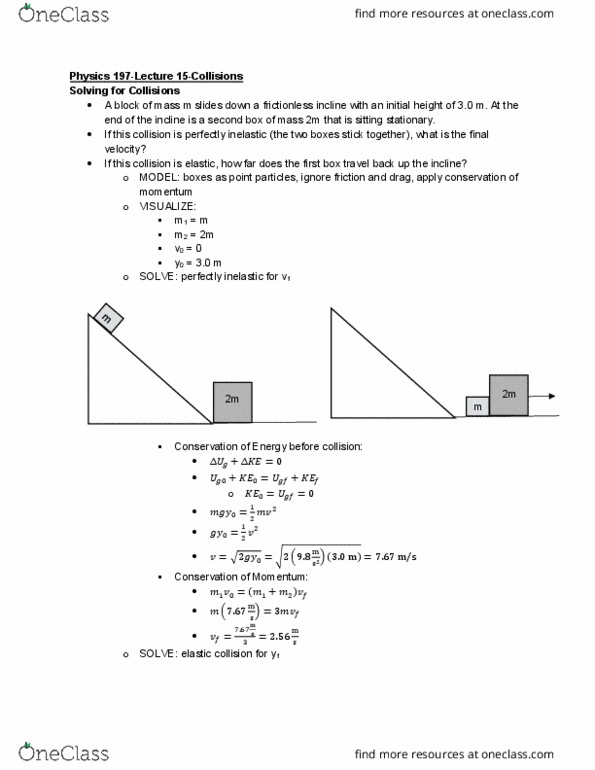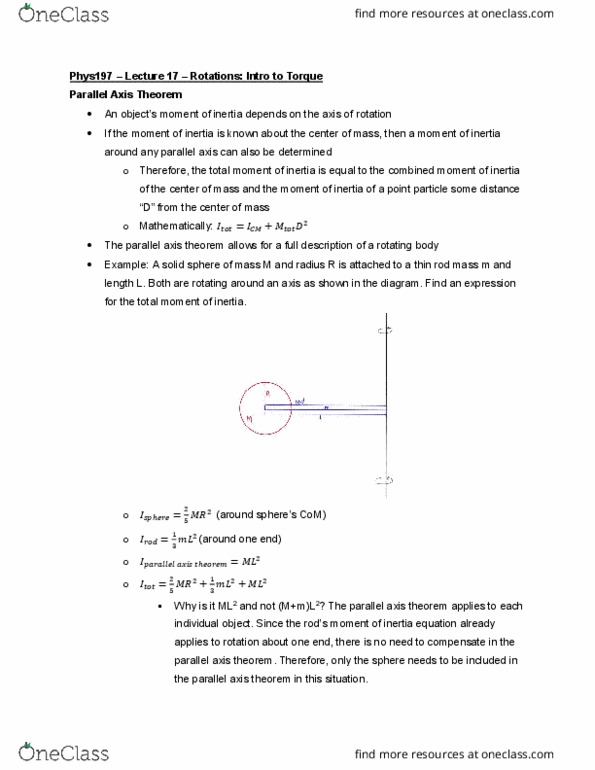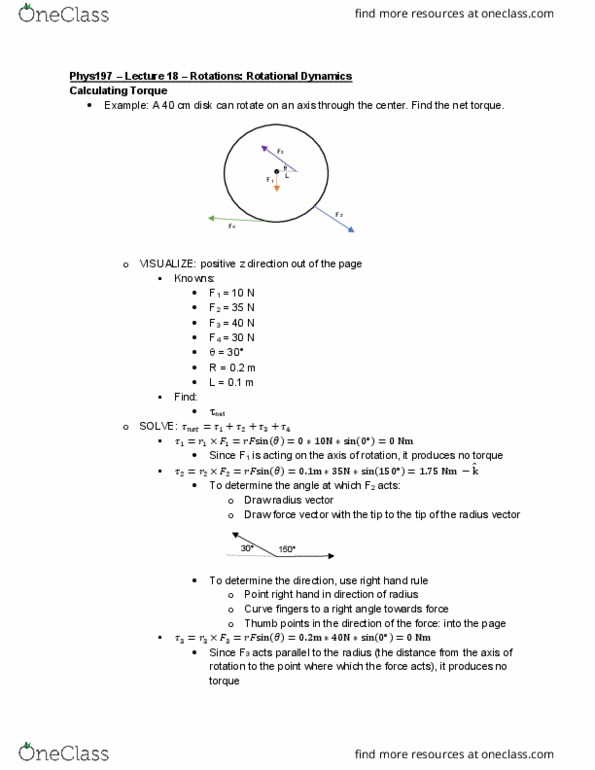Physics 197 Lecture Notes - Lecture 17: Parallel Axis Theorem, Point Particle, Angular Velocity
Physics 197 verified notes
17/30View all
Document Summary
Phys197 lecture 17 rotations: intro to torque. Parallel axis theorem: an object"s moment of inertia depends on the axis of rotation. The parallel axis theorem applies to each individual object. Since the rod"s moment of inertia equation already applies to rotation about one end, there is no need to compensate in the parallel axis theorem. Remember that the parallel axis theorem calls for an additional component of the mass times the distance from the axis squared. Does the angular velocity ( ) increase, decrease, or remain unchanged: using the right hand rule, we can determine the initial angular velocity ( ) is directed upwards towards you. With the addition of an upward force causing an upward acceleration ( ), the angular velocity would increase. Torque ( : mathematically: = = , defined as the angular quantity of force, where is the vector between the axis of rotation and the point where which the, note: the x means cross-product: =sin(cid:4666) (cid:4667)






